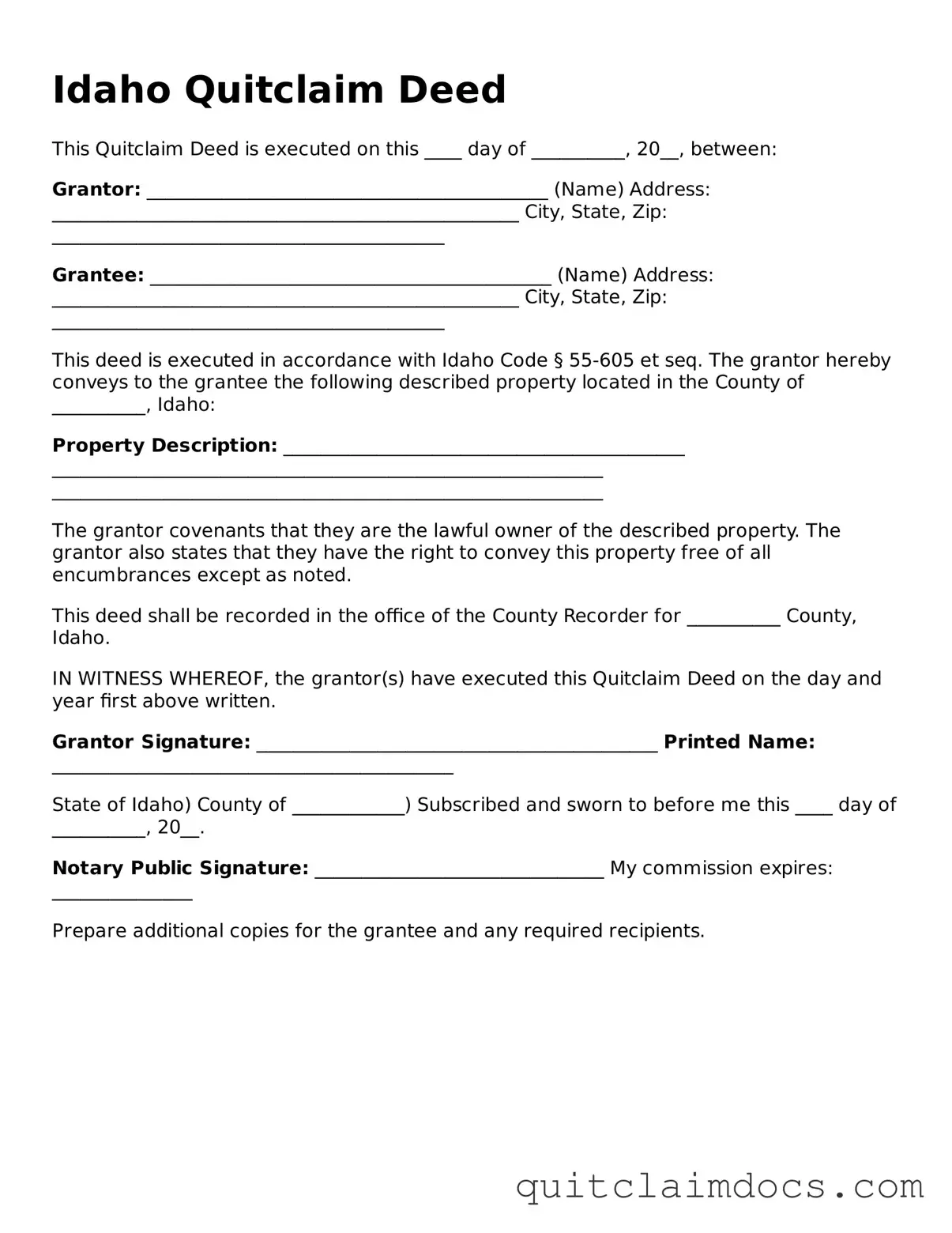Idaho Quitclaim Deed
This Quitclaim Deed is executed on this ____ day of __________, 20__, between:
Grantor: ___________________________________________ (Name)
Address: __________________________________________________
City, State, Zip: __________________________________________
Grantee: ___________________________________________ (Name)
Address: __________________________________________________
City, State, Zip: __________________________________________
This deed is executed in accordance with Idaho Code § 55-605 et seq. The grantor hereby conveys to the grantee the following described property located in the County of __________, Idaho:
Property Description: ___________________________________________
___________________________________________________________
___________________________________________________________
The grantor covenants that they are the lawful owner of the described property. The grantor also states that they have the right to convey this property free of all encumbrances except as noted.
This deed shall be recorded in the office of the County Recorder for __________ County, Idaho.
IN WITNESS WHEREOF, the grantor(s) have executed this Quitclaim Deed on the day and year first above written.
Grantor Signature: ___________________________________________
Printed Name: ___________________________________________
State of Idaho)
County of ____________)
Subscribed and sworn to before me this ____ day of __________, 20__.
Notary Public Signature: _______________________________
My commission expires: _______________
Prepare additional copies for the grantee and any required recipients.
